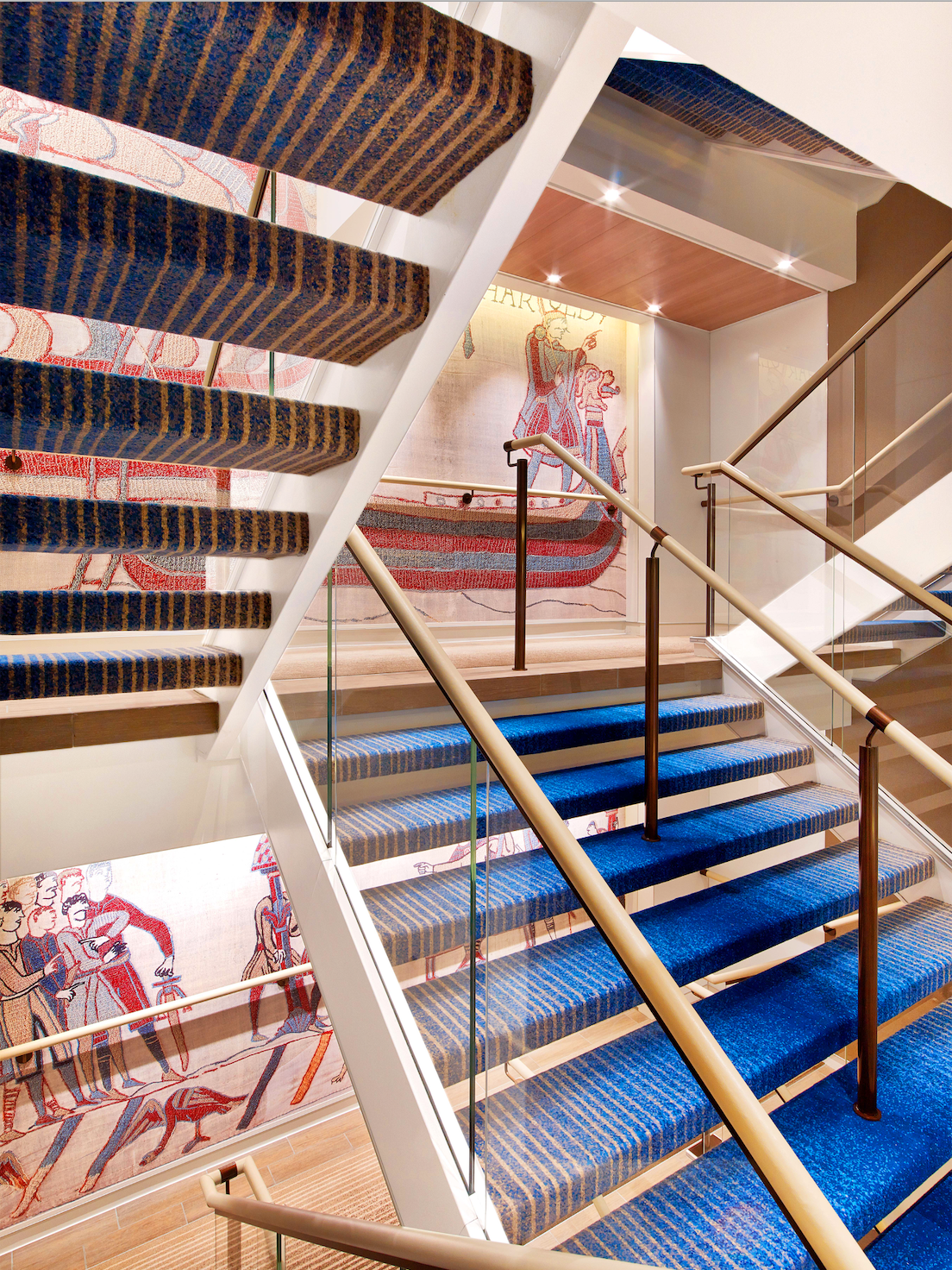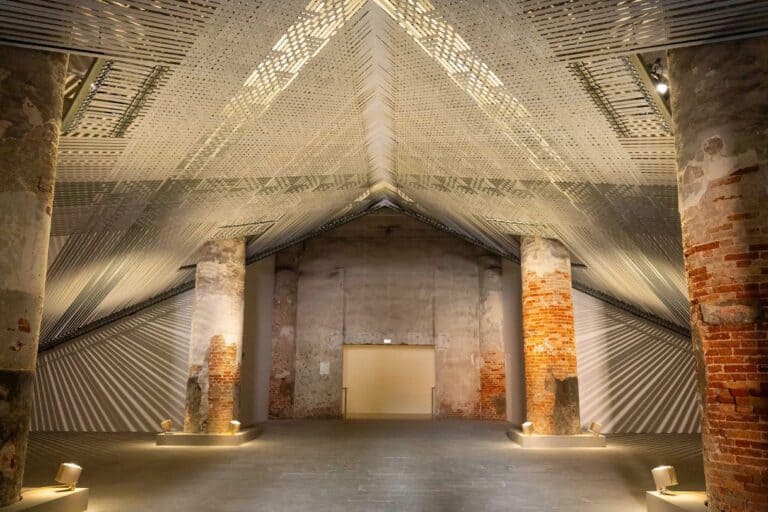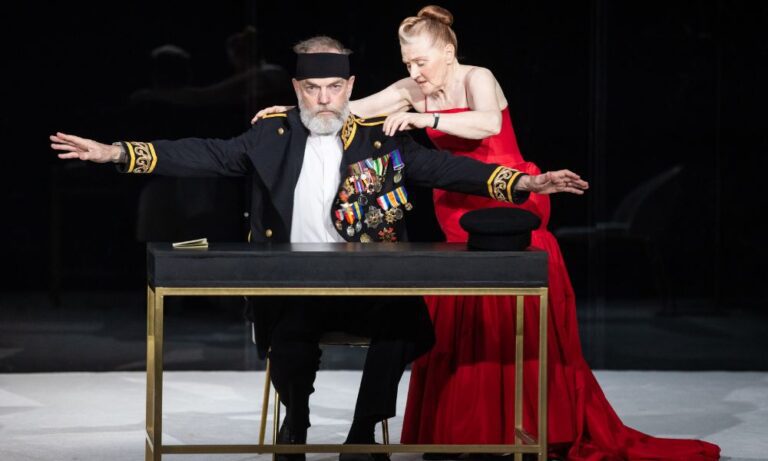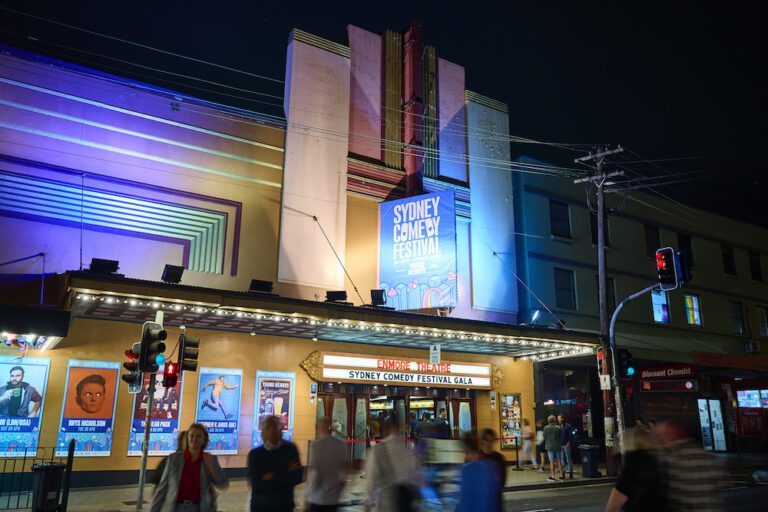Boarding the Viking Mars ocean ship in Stockholm, which was only launched in 2022, the first thing I notice, apart from the friendly welcome from staff, is the bright orange glossy elevator interiors as I zoom through the decks. Peeking out the glass-sided lift, I spy a giant projection of an Edvard Munch painting in the three-floor-high Atrium below. I am keen to learn more about the enormous Munch painting. In no time at all I have downloaded the Viking Art Guide app that provides commentary from Karin Hagen, Viking’s Executive Vice President, as well as curators and experts to create my very own personal self-guided experience.
Walking from deck to deck, the headphone icon next to a piece of artwork lets you open the app on your phone. When you enter the number under the icon you learn a lot more detail about each work. The experience really does feel like you are in some major city art museum, but somehow it is much more intimate as the app lets you move quickly through the details of each work.
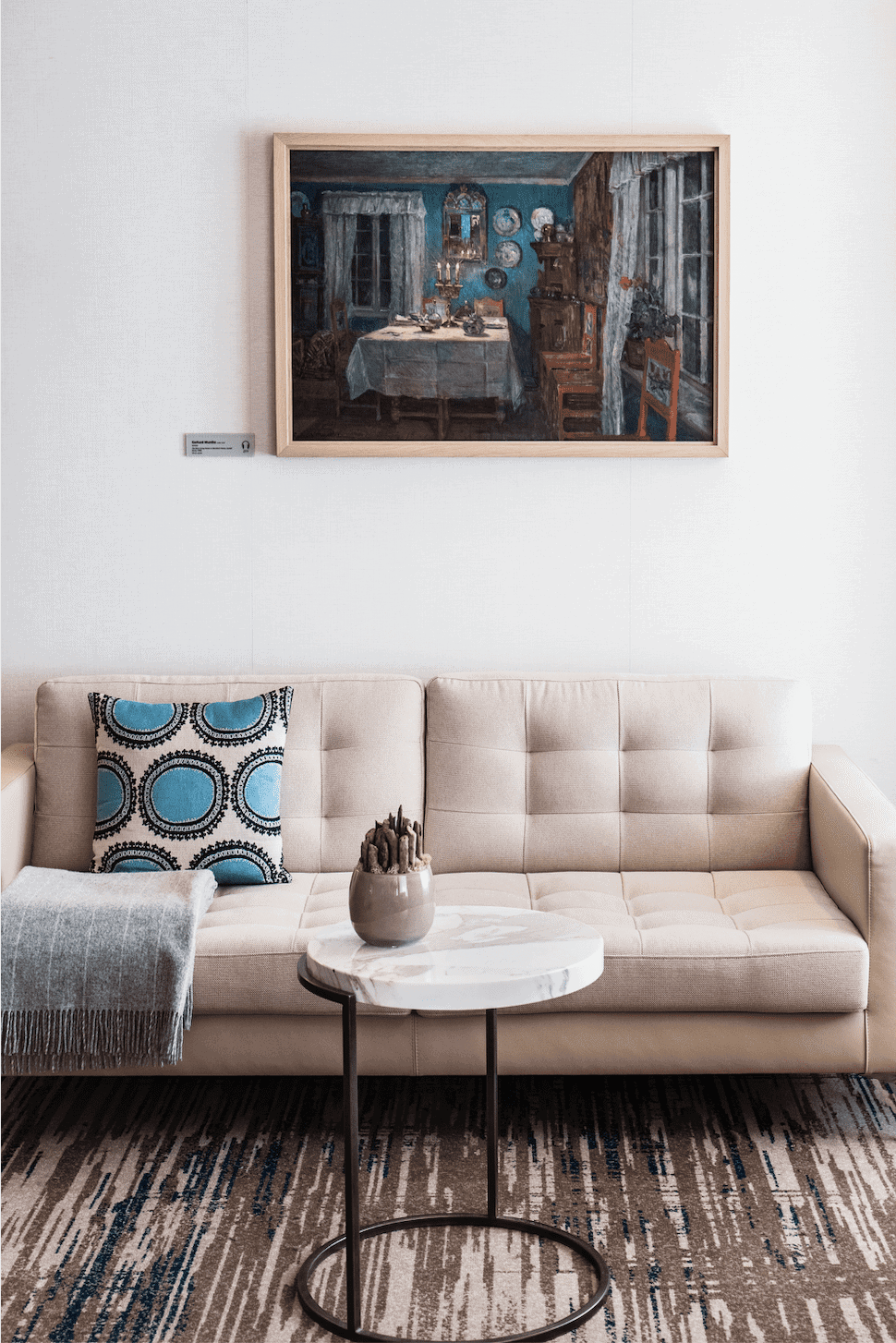
Honouring heritage
Onboard, the art is very much an ode to Viking’s Nordic heritage, with a carefully curated, diverse range from emerging and well-known artists in this light-filled moving art gallery. A mix of digital prints, photography, oil and acrylic paintings, sculpture and local handicrafts have all been selected reflecting Viking’s Nordic origins and the region’s extraordinary nature, as well as from the many vast destinations Viking visits.
Big-name artists like Munch are also showcased in the collection. He lived a long life and became Norway’s most internationally famous artist, with his painting ‘The Scream’ having become an iconic image. Legend goes that Munch was out walking at sunset when he ‘heard the enormous, infinite scream of nature’. He made two painted versions and two in pastel, as well as a number of prints. One of the pastels is one of the highest-priced artworks ever auctioned. The shore excursion, ‘Behind Closed Doors Tour’, offered as part of the Viking Homelands cruise, takes you to the new MUNCH museum in Oslo. Located in the newly opened waterfront, the highly distinctive museum building was designed by Estudio Herreros and created especially for the world’s largest collection of art by Munch.
Norwegian folk art is also well represented onboard, with pieces in public spaces on tables and bookshelves. In pre-industrial rural Norwegian society, household furniture and utensils were made by locals living on farms or local craftsmen with no professional training. These skills were handed down through generations, with many items decorated with simple adornment. It was around 1870 that these decorated utility items began being regarded as art called ‘folk art’ with wood carving often rich in colour and pattern.
The other standout artwork around the ship is the black-and-white photography, which features many of the Norwegian mountains and fjords, with looming skies and landscapes that seem frozen in time.
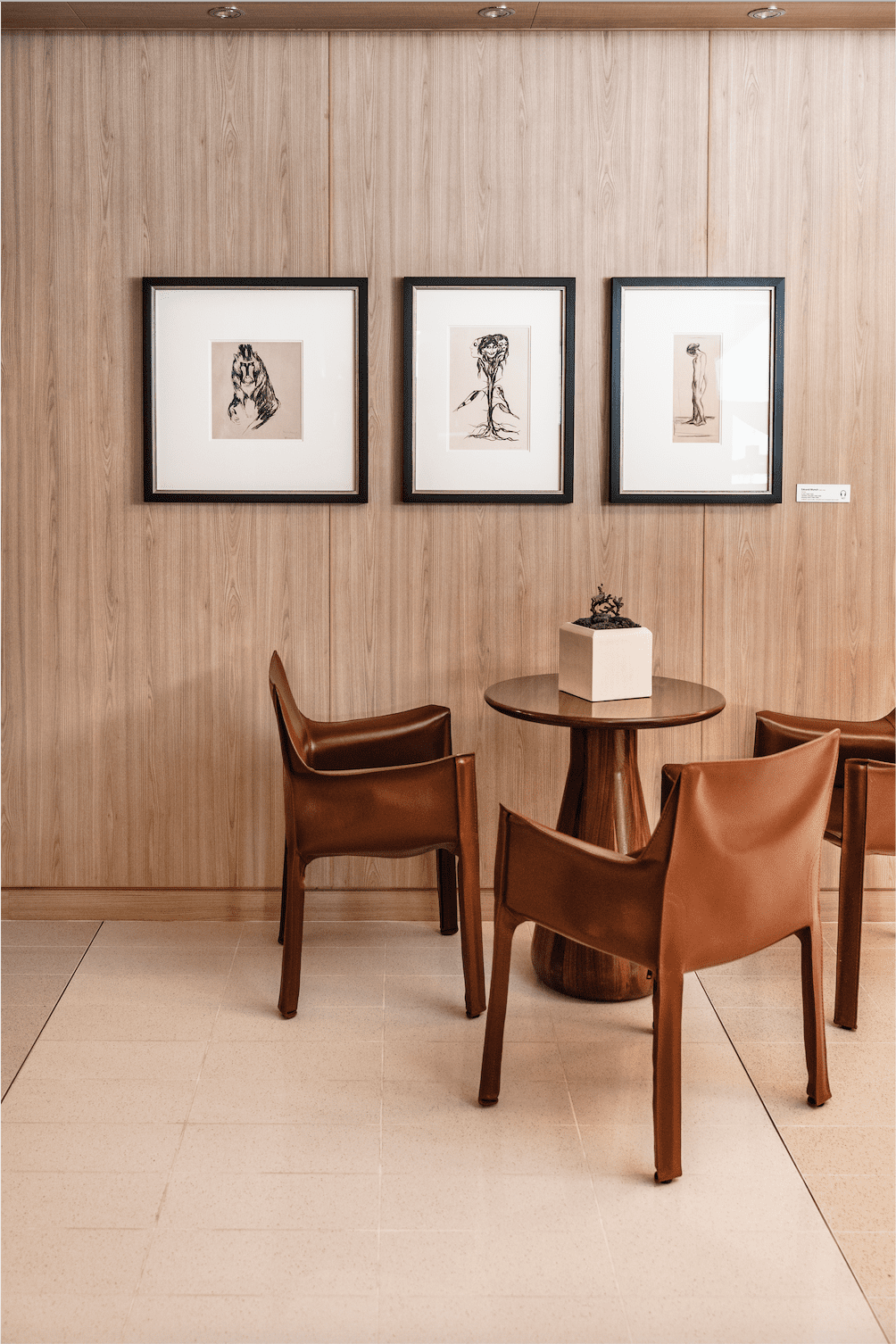
Abstract appeal
One of my favourite pieces is from the pioneering abstract artist Jakob Weidemann, who was considered to be one of the most influential artists in Norwegian modernism from the 1950s until his death in 2001.
Leading the way for other abstract artists, he constantly pushed boundaries, finding his signature style in abstract-expressive art with nature as inspiration. In developing experimentation with colour, his paintings are characterised by light hues in blue, pink, yellow, green and violet and forms from the forest.
Standing in front of Weidemann’s 1985 work ‘Composition in Blue’ – which is truly a beautiful abstract work – you can’t help but imagine what he was seeing within nature as his inspiration, as the colours draw you into this oil on canvas painting. It has found its perfect location on Deck 2 with the dancing light from the Nordic sea reflecting across the painting, adding to the feeling that this painting is very much connected to nature.
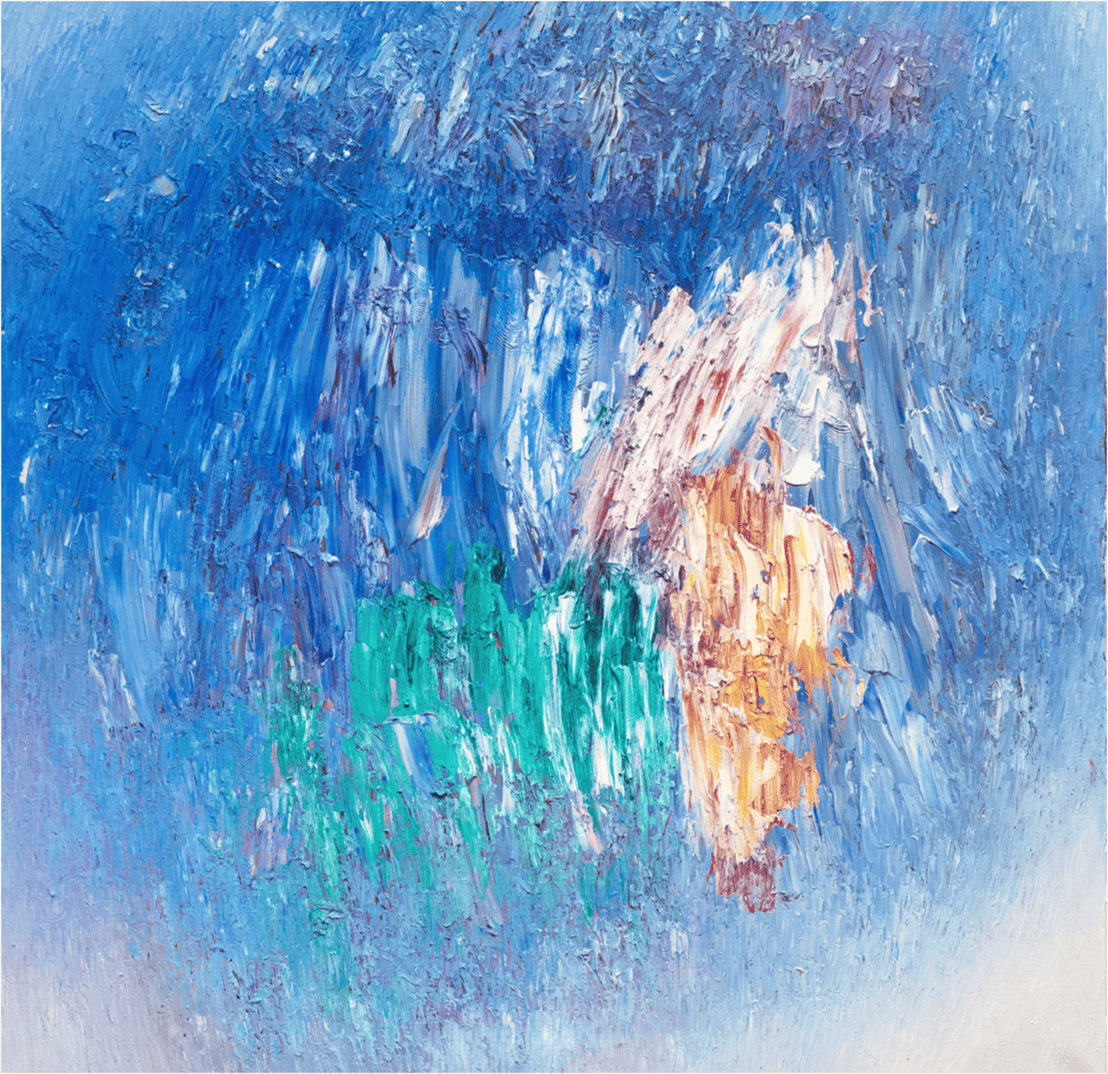
As you approach The Restaurant up the grand sweeping staircase, stopping you in your tracks is the giant work of Alastair Miller’s 2021 blue photograph ‘A Thousand Points of Light’. It is spectacular, and at first I thought it was a giant painting.
Running along The Restaurant walls are long mural-like paintings in gorgeous shades of green by artist Astrid Nondal, beautifully painted acrylic on linen canvases.
These landscapes are from around her hometown of Tyssedal, which is located along a narrow fjord between Folgefonna and Hardangervidda, and was in its time also sought out by travellers because of its overwhelming abundance of nature. The area has since become characterised by a strong human touch through the development of power stations and heavy industry. This serves as a strong metaphor in Nondal’s work, perceiving nature as enticing and beautiful yet imitating and unpredictable. She often aims to create double meanings in her works, which at first glance look serene but have an underlying turmoil created by the gap between the natural world and the manmade, using nature as a mirror to understand and seek out her own inner nature. They are interesting paintings.
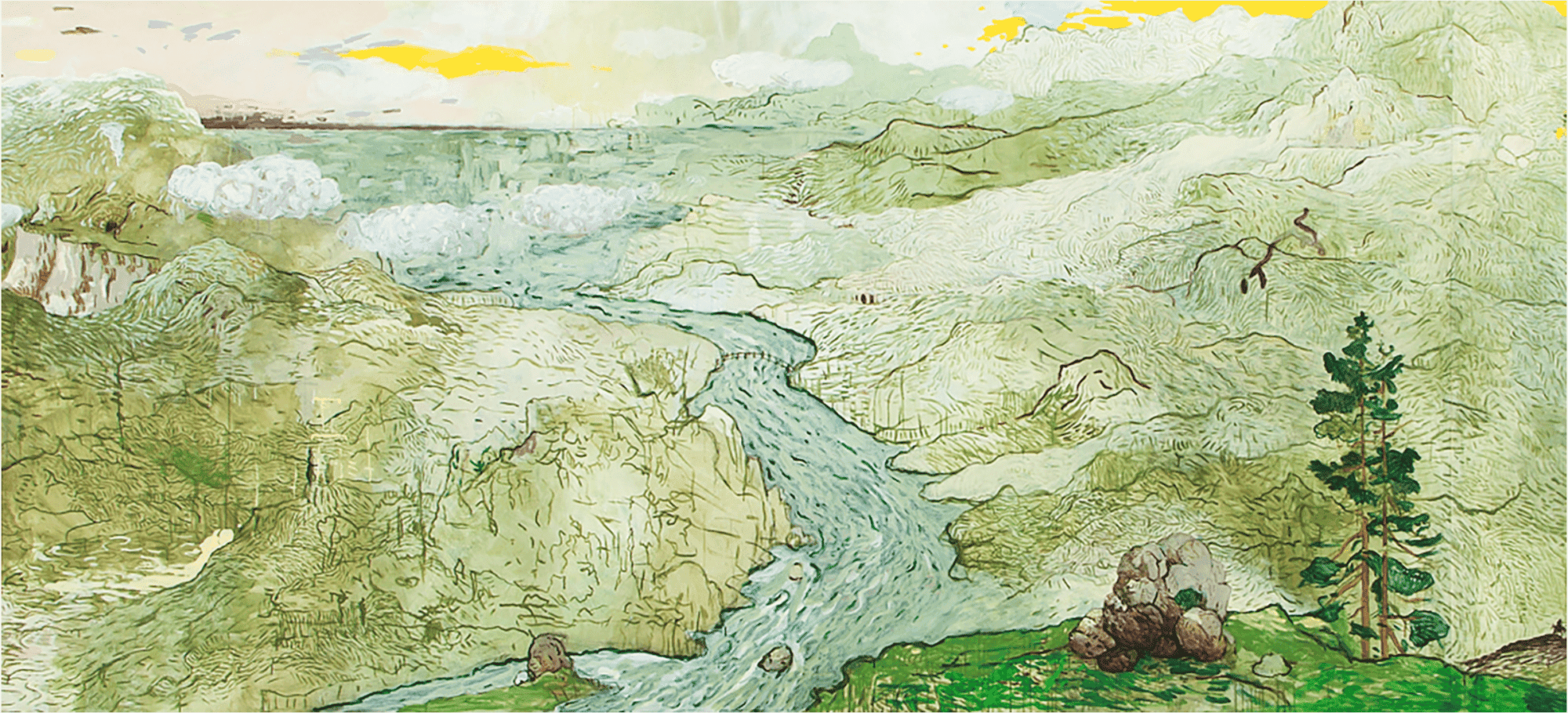
Young at art
An initiative from Chairman Torstein Hagen, is that in each stateroom the walls are decorated with framed children’s drawings made by schoolchildren who attend rural schools in China, and have been financially supported by Viking. The young artists have drawn from photographs depicting scenes in Bergen and other destinations in Vikings itineraries. Hanging next to the children’s drawings are the photographs they were inspired by.
The entire art collection across the ship is impressive. Renditions of different scenes from the Bayeux Tapestry, one of the most famous works of art in the Western world from medieval times, grace stairwells throughout the ship. They document scenes of William the Conqueror’s invasion of England and the death of Anglo-Saxon King Harold in the Battle of Hastings.
The cruising experience has become much more than just a buffet and a cocktail. A Viking cruise is for smart thinkers; their ‘no casino and no children’ strategy makes this the ideal cruise for adults who want to learn on the move and who will appreciate this ship with a curated art selection you can lose yourself in and appreciate the culture and the talent in these spaces. Using the Viking Art Guide app, you will soon appreciate this world and the work that has gone into this collection of art at sea.
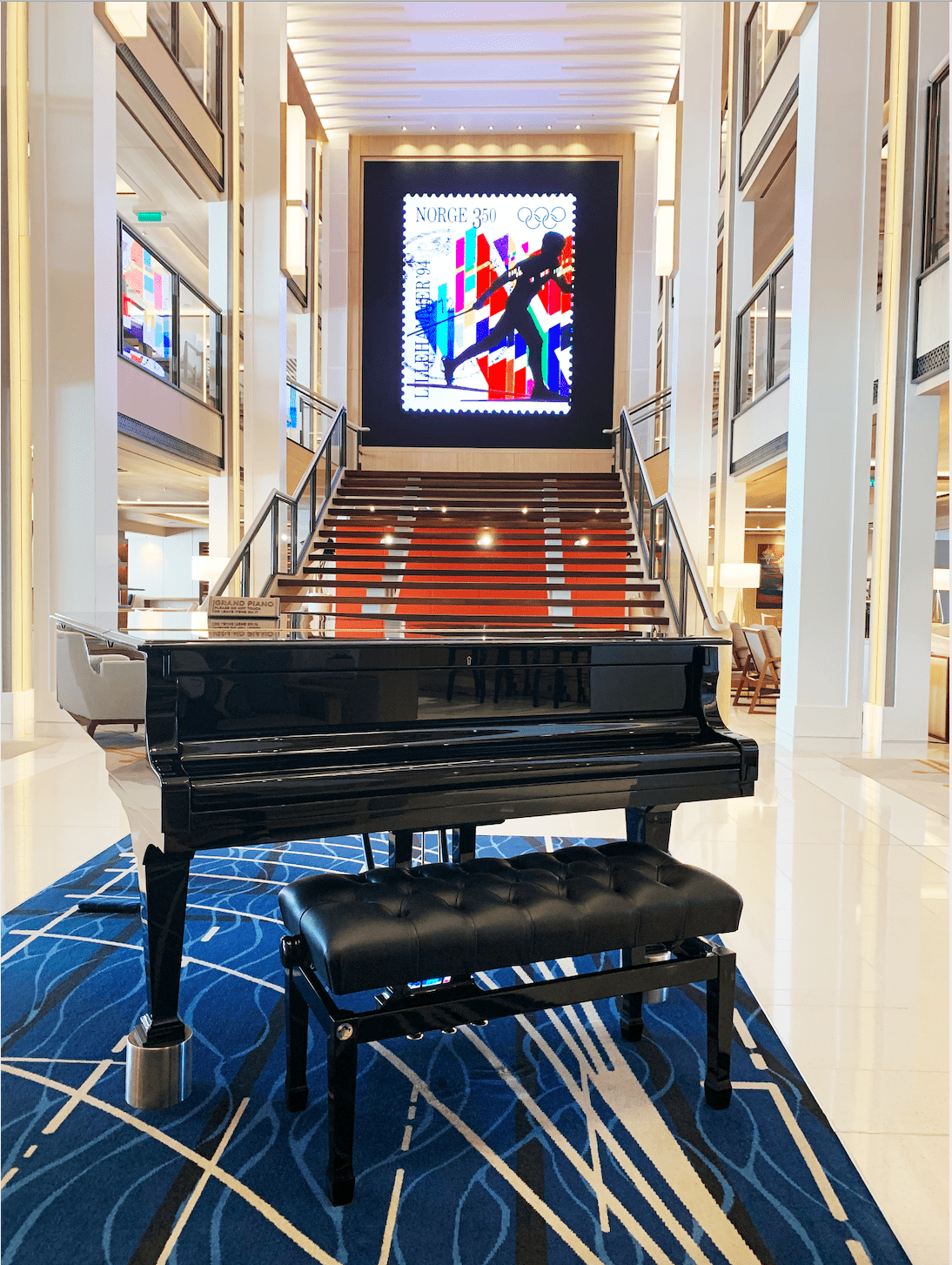
Add the app & explore
Why not download the Viking Art Guide app for commentary from Karin Hagen, Viking’s Executive Vice President, plus a selection of curators and experts for a self-guided art experience.
The headphone icon and number next to a piece of artwork lets you open the app on your phone to find a relevant audio file and more information about the art.


